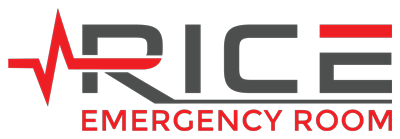Is it a Sprain or a Fracture?
Sprains and bone breaks can be difficult to tell apart without diagnostic imaging. While the symptoms are similar, a fracture is a break in your bone, while a sprain is a soft tissue injury.
Sprains occur when the ligaments around a joint stretch too far or tear, often due to a fall or sports injury. Sprains can range from mild to severe and symptoms can include:
- Pain and swelling
- Bruising and discoloration
- Difficulty moving the injured area
- The injured area feels hot
You can typically treat mild-to-moderate sprains at home with rest, elevation, and over-the-counter medication. Severe sprains might require surgery for proper healing and you may want to head to the ER to avoid further injury.
Symptoms of a Bone Fracture
In medical terms, a fracture is the same as a break. Fractures usually result from trauma like car accidents, falls or sports injuries. Symptoms of a broken bone include:
- Pain
- Restricted or impossible use of a limb
- Limb deformity
- Inability to bear weight on the injury
- Crepitus (a crunching sound from the ends of fractured bones rubbing together)
- Swelling
- Bruising or discoloration
- Bone or joint set at an irregular or atypical angle
- Bone protruding from the skin
To confirm a fracture, you generally need an X-ray unless the bone is protruding through the skin. Severe fractures and sprains might also require an MRI or CAT scan to check for damage to other structures such as ligaments, tendons, and muscles.
Types of fractures
There are many different types of bone fractures. Treatment will depend on the type of fracture and its severity. Severity generally depends on the force that caused the break.
If there was only slight force, the bone may have been cracked and not broken all the way through. With greater force, like often occurs in a car crash or a gunshot, the bone may be shattered or broken in several spots.
Types of fractures commonly seen include:
- Stable. The break is a simple one and the ends of the breaks line up and are only slightly out of place.
- Compound. Also referred to as an “open” fracture. The bone is protruding from the skin. The force used that broke the bone may have pierced the skin at the time of the break.
- Oblique. There is an angled pattern to the fracture.
- Transverse. The fracture line is horizontal.
- Comminuted. The bone has been shattered into three or more pieces.
Treatment for Bone Breaks
The bone needs to be restored as much as possible to its pre-break condition. Treatment depends on the severity of the break. Common treatments are:
- Cast immobilization. This puts the ends of the broken bone together and keeps the bone in its proper position so it can heal.
- Functional cast or brace. This can be used for more minor breaks. As with a cast, it keeps the bone in its proper position, but may allow some movement during the healing process.
- Open reduction. This is a surgical process where the orthopedist uses metal pins, screws, and a plate to hold the bone pieces together. The bone is immobilized with a cast or boot and there is no weight-bearing for a time to allow the bone to heal.
- External fixation. This is for the most severe breaks and is a somewhat complicated surgical process.
When you Should go to the ER if you Think you Broke a Bone
While a walk-in clinic or primary care physician can treat some broken bones, you should head straight to an Emergency Room if you suspect you have one of the following types of fractures:
- Head or skull fracture. These can cause long-term problems, such as frequent headaches, cognitive issues, and more.
- Spinal fracture. The consequences of this type of fracture depend on the location of the fracture. Stay as immobile as possible while you head for the hospital. To be safe from possible paralysis, you may want to call an ambulance where the attendants will immobilize you for transport.
- An open or compound fracture. This is when the broken bone penetrates the skin.
- A fracture that is causing severe bleeding.
Avoid Wait Time by Choosing Stand-Alone Rice Emergency Room
The stand-alone Rice ER is open 24-hours, seven days a week, 365 days a year. Rice ER provides all the same services available at a hospital-based ER but with a much shorter waiting period. At Rice, you will talk to a board-certified physician within minutes of your arrival.
Rice ER is fully staffed with board-certified physicians and specially trained registered nurses. The ER has all the necessary diagnostic tools, including imaging and laboratory testing, which allow for quick results.
Rice Emergency room specializes in getting you the urgent care you need without the long wait times or the need to go to multiple locations for diagnostics and treatment. If you need to be seen immediately, head to Rice ER.




